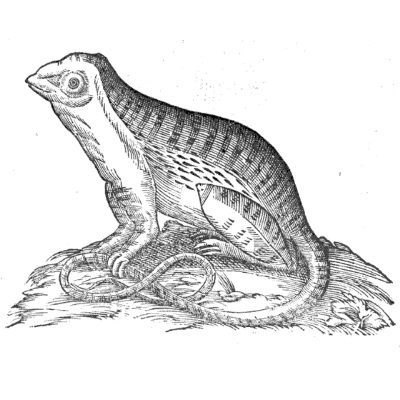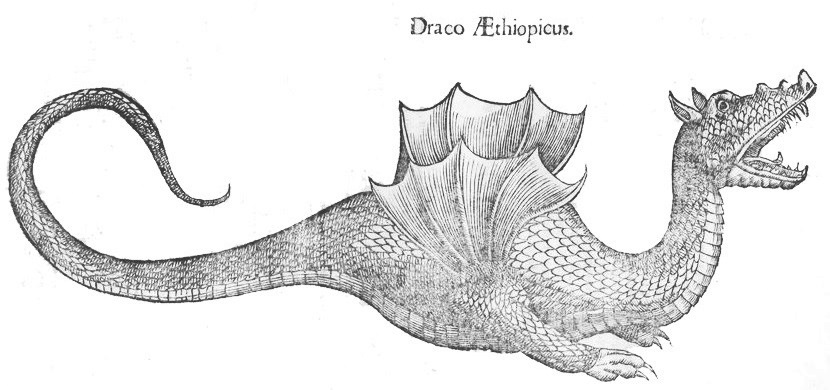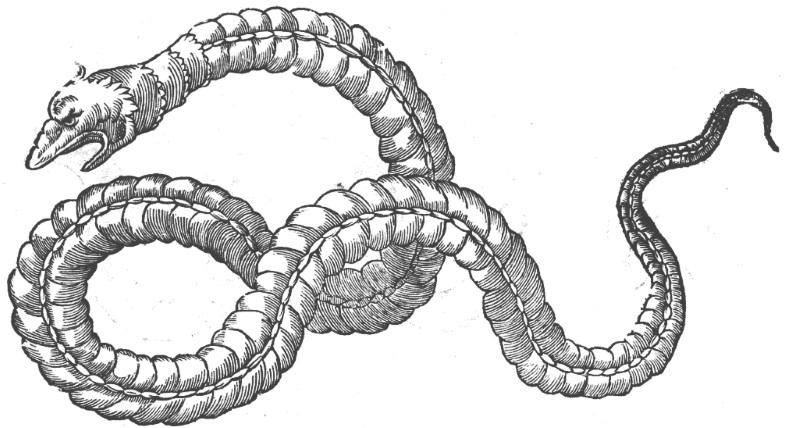Thinking the unthinkable What we cannot think in programming
This blog post is an edited and more accessible version of an article Thinking the unthinkable that I recently presented at the PPIG 2016 conference. The original article (PDF) has proper references and more details; the minimalistic talk slides give a quick summary of the article.
If you find this interesting, you might also be interested in a workshop we are planning. To keep in touch leave a comment on GitHub, ping me at @tomaspetricek or email tomas@tomasp.net!

Our thinking is shaped by basic assumptions that we rarely question. These assumptions exist at different scales. Foucault's episteme describes basic assumptions of an epoch (such as Renaissance); Kuhn's research paradigms determine how scientists of a given discipline approach problems and Lakatos' research programmes provide undisputable assumptions followed by a group of scientists.
In this article, I try to discover some of the hidden assumptions in the area of programming language research. What are assumptions that we never question and that determine how programming languages are designed? And what might the world look like if we based our design method on different basic principles?
What we cannot understand
The naive view of science is that it follows the scientific method in order to accumulate perfect infallible body of sound knowledge. This idealized view has been challenged by many philosophers. One of the most significant issues is incommensurability – the idea that two theories may not share a common basis that would allow evaluating them using a common metric. Incommensurable theories do not only assume different things, but they ask incompatible questions.
Episteme and human knowledge
Michel Foucault's concept of episteme captures an incommensurability at the most fundamental level of human knowledge. An episteme defines the assumptions that make human knowledge possible in a particular epoch. It provides the apparatus for separating what may from what may not be considered knowledge.
Foucault gives an example of the incommensurability between the earlier episteme of the Renaissance and the later episteme of 17th-18th century. The former is characterized by signs and resemblances while the latter is characterized by ordering and categorization. Natural historian Comte de Buffon (18th century) refers to the work of Ulisse Aldrovandi (16th century):
Buffon was to express astonishment at finding in the work of a naturalist like Aldrovandi such an inextricable mixture of exact descriptions, reported quotations, fables without commentary, remarks dealing indifferently with an animal's anatomy, its use in heraldry, its habitat, its mythological values or the uses to which it could be put in medicine or magic.
Aldrovandi's books contain precise descriptions of snakes (admired by de Buffon for their accuracy) and dragons (I picked a few as illustrations for this article). As Foucault explains, Aldrovandi's report was not incorrect. It linked things in accordance with the system of signs and resemblances, which was incommensurable with the system of ordering and categorization that was assumed by Buffon.
In Aldrovandi's world, snakes that you can see and describe were as real and important as dragons that you heard about. The color of a snake's skin mattered just as much as the magical powers of a dragon. This was hard to imagine for de Buffon (and is even harder for the modern reader), but it is vivid example of the effect that grounding in a different episteme gives.
Paradigms and research programmes
Foucault's episteme considers the whole of human knowledge and may appear too remote for talking about programming, but related concepts in philosophy of science capture common assumptions in a given scientific discipline or among a sub-group of scientists.
According to Kuhn, normal science is governed by a single research paradigm. The paradigm sets standard for sensible scientific work. A paradigm is not explicitly defined. It is formed by the methods and assumptions that a scientist learns during her training. When a paradigm can no longer solve ordinary scientific problems (puzzles), it gets replaced (over the course of a generation) by a new one that is incommensurable with the old one. As with episteme, the new paradigm asks different questions and so much of the old science loses meaning.
At a smaller scale, shared assumptions and methods used by a group of scientists have been captured by Lakatos as research programmes. A research programme recognizes that, even in regular science, some laws and principles are more basic than others. When a scientist expects something to work - and it does not - she will not blame the core assumptions, but instead addresses the issue by modifying some of the additional assumptions. (Did we not detect Higg's boson? That's not because it does not exist, but because our Large Hadron Collider is not large enough!) Due to the different core assumptions, the work arising from different research programmes is, again, to some degree incommensurable.
Episteme and paradigms in programming
Do episteme, paradigms and research programmes affect how programming language research is done? As with any other science, the answer is yes. For example, programming language research heavily relies on mathematical methods. As a programming language researcher, you can ask whether a mathematical model of a language has certain properties (is a type system sound?), but you'd be treated as lunatic if you (non-jokingly) asked if a certain language feature is beautiful. The accepted paradigm says that this is not a sensible scientific question.
Mathematization of computer science
The history of computer science suggests that the mathematical focus was not the only possibility. Early programmers were often seen as anything from clerical workers to chess players and artists. In fact, early study noted that majoring in mathematics was not found to be significantly related to performance as a programmer. The focus on mathematics was, however, a good move for early academic computer science:
The rise of theoretical computer science was anything but inevitable. (...) Advocates of theoretical computer science pursued a strategy that served them well within the university, but increasingly alienated them from their colleagues in the industry.
Mathematization of computer science established it as a legitimate academic discipline and differentiated it from industrial computer engineering. An essential part of the development was the concept of algorithm, which provided a practical agenda for advancing the discipline. Computer science became a normal science, pre-occupied with normal puzzle-solving activity. The newly founded research paradigm determines which questions are scientific (various questions about algorithms) and how answers should be sought (through formal methods).
For a modern computer scientist, it is hard to imagine computer science where algorithm is not a foundational concept, but that is because we are trained to think within our dominant paradigm. A historical coincidence made algorithm a core part of our thinking about computation and it requires a lot of imagination to think differently. It is even harder to question the idea that mathematics can find relevant answers to the questions posed by programming. This is because mathematization has become a part of our modern episteme. But how might a computer science look when our episteme or research paradigms change?
The Algol research programme
Paradigm shifts are rare and the change of episteme even more so. At a smaller scale, much of the modern academic programming language research has been influenced by the Algol research programme. The goal of the programme is to utilize the resources of logic to increase the confidence in the correctness of programs.
The Algol research programme defines core assumptions, together with a sufficiently open ended agenda. Much of the theoretical programming language research aims to prove programs correct through the use of formal logic. The methods differ, but the hidden assumption that formal proof provides the correct methodology is shared. Any experimental failures (such as the fact that proving programs correct is still difficult after 50 years of the existence of the Algol research programme) are attributed to less core aspects – we do not yet have sufficiently powerful formal methods, the problem is not properly formally specified and programmers in the industry are just not using the right tools.

Thinking the unthinkable
I outlined how programming and science are affected by assumptions that are implicit in research programmes, scientific paradigms and also the episteme of the current period. I hope my concrete examples from programming language research convinced you that paradigms are not just abstract philosophical concepts.
The establishment of theoretical computer science rooted in mathematics was not an inevitable development and it is conceivable that computer science would evolve differently, building on principles other than algorithms and formal logic. In programming language research, the predominant Algol programme is not the only one. A largely incommensurable research programme was defined by Smalltalk:
Programming [in Smalltalk] was not thought of as the task of constructing a linguistic entity, but rather as a process of working interactively with the semantic representation of the program, using text simply as one possible interface.
In the rest of the article, I speculates on what might programming research arising from a different paradigm look like. As I explained, our paradigms are incommensurable with paradigms arising from other assumptions. They do not share the same goals and ways of thinking. This is also the case for my two imaginary paradigms in the next two sections - but with enough imagination, you can imagine another way of thinking where those would make perfect sense!
Taxonomies of programming ideas
Theoretical computer scientists try to extract mathematical essence of programming languages and study its formal properties. Now consider a kind of knowledge that instead aims to explore the design space and build a taxonomy of objects (ideas, concepts, ...) that occupy the space. It considers the entities as they are, rather than trying to extract their mathematical essence. What would be the consequence of such way of thinking that attempts to relate and organize programming ideas in taxonomies, rather than abstracting?
In programming language research, many novel ideas that defy mathematization are left out because they are too "messy" to be considered through the mathematical perspective. If our paradigm made us seek relationships, those would all became within the realm of computer science. For example, we would see similarities between live coded music and formula editing in Excel as both of those represent a form of programmer interaction with immediate observable feedback (thanks @SamAaron!).
Science should not merely observe, but also "twist the lion's tail" and run experiments to probe the properties of the nature. If our focus is on building taxonomies, the nature of relevant experiments will also differ. Rather than measuring properties of simple models, experiments designed to reveal relationships need to highlight interesting aspects of a behaviour in its full complexity. They need to reproducibly demonstrate relationships that are not immediately obvious, similarly to how thought-experiments in sciences and philosophy highlight an intriguing aspect of a theory. An interesting format that appeared recently is the presentation of programming research in the form of screencasts - this way, we can actually record and observe certain feature in its full complexity, without eliminating aspects that may turn out to be important!
A consequence of the focus on taxonomies in 17th and 18th century was the creation of museums, which present the studied objects neatly organized according to the taxonomy. A computer scientist of such alternative way of thinking might follow similar methods. Rather than finding mathematical abstractions and presenting abstract mathematical structures, she would build (online and interactive?) museums to present typical specimen as they appear in interesting situations in the real-world.
Crossing the vertical gaps with metaphors
Does modern computer science have something to gain from the Renaissance age centered around signs and resemblances? Work on programming languages is done at three layers. At the upper layer, language or library designs follow some intuitive ideas, which are turned into an actual program (middle layer). Formal reasoning is done about a simplified mathematical model, which is the lower layer. Programming research operates horizontally - relating different formal models or various implementations - but does not easily cross between the layers. Theoretical work at the bottom is rarely linked with the informal top layer.
Signs and resemblances provide the missing link between layers. In object-oriented design, an object is a metaphor for an object in the real-world, but metaphors can be found in many areas of programming. We use them to conceive an idea and use our intuition at the higher level to guide design at lower levels. Since our scientific way of thinking does not consider such resemblances important, we then hide them (for brevity, or out of disinterest) from our published narrative.
Metaphors often remain present only through naming. In John von Neumann's First Draft of Report on EDSAC (which described modern computer architecture) individual units are called "organs" suggesting a curious biological metaphor for the system structure. Even more obvious metaphors are hidden in the plain sight. For example, when and why did we start calling programming languages "languages"?
If resemblances and metaphors played a fundamental role in our scientific thinking, we would not
just gain interesting insights from them, but we would also ask different questions (which appear
secondary or even unscientific when considered through the perspective of our current way of
thinking). What research agenda would computer scientist studying resemblances ask? Looking at the
problem of concurrent programming as an example, one might try to design programming language
models for concurrency by studying how simultaneity is expressed in different types of novels.
What are the postmodern alternatives to threads where concurrent processes occurring in the same
temporal interval are described in successive textual parts of the narrative?

Conclusions
Overall way of thinking that is captured by episteme or paradigms has been changing throughout the history and we can expect it to continue changing. Ideas grounded in different episteme or paradigms are often incommensurable, meaning that they have different basic assumptions and consider different questions. Just like de Buffon was astonished when reading the work of Aldrovandi, we may wonder which of our current scientific achievements will, in the future, appear as exact anatomical descriptions and which will appear as fables or magic.
Were we to think about programming in terms of taxonomies, much of the present work that explores interesting aspects of, say, programming language design space will still be relevant. Future readers might be astonished why we focus on irrelevant technical details rather than trying to present the most unique interesting aspects of the work in their full richness.
Were we to think about programming in terms of similarities and metaphors, formal mathematical models will become just one of many forms of metaphors available when understanding programs, but future thinkers might be astonished by our attempts to find more and more remote abstractions that gradually lose more and more of the similarity with the original idea and become merely a work of art or fiction.
If you got all the way to the end, you might also be interested in a workshop we are planning. To keep in touch leave a comment on GitHub, ping me at @tomaspetricek or email tomas@tomasp.net!
References
The following is just a list of some of the papers and books that contributed to the ideas in this article in one way or another. You will find proper citations in the original paper.
- Thomas Kuhn. The structure of scientific revolutions. University of Chicago Press, 1962
- Paul Feyerabend. Against method. Verso Books, 1975
- Michael Foucault. The Order of Things: An Archaeology of the Human Sciences. Routledge, 1966
- Imre Lakatos. The methodology of scientific research programmes. Cambridge University Press, 1978
- Nathan Ensmenger. The computer boys take over. MIT Press, 2012
- Mark Priestley. A science of operations. Springer, 2011
- John von Neumann. First Draft of a Report on the EDVAC. University of Pennsylvania, 1945
Published: Tuesday, 11 October 2016, 6:30 PM
Author: Tomas Petricek
Typos: Send me a pull request!
Tags: philosophy, programming languages